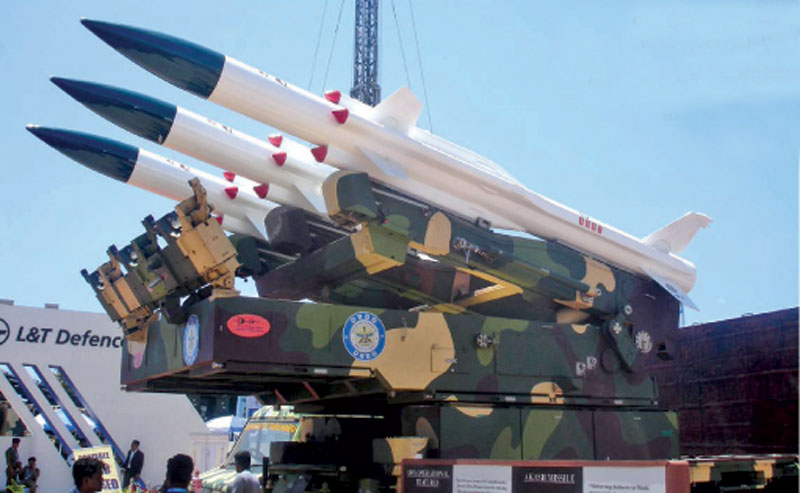Halfway House
Mohammad Asif Khan
India’s defence exports are soaring. In the financial year 2023-24, they reached USD 2.63 billion, a 32.43 per cent increase from the previous year. This growth is attributed to a shift towards self-reliance and a desire to shed the tag of the world’s largest arms importer. The Defence Production and Export Promotion Policy (DPEPP) 2020 aims to achieve a turnover of USD 25 billion in defence manufacturing by 2025, with USD 5 billion in exports. While ambitious, this policy has yet to bridge the significant gap in advanced defence technology production.

Defence minister Rajnath Singh said the export version of Akash missiles would be different from the system currently deployed with Indian armed forces
India remains the world’s largest arms importer. According to the latest report by the Stockholm International Peace Research Institute (SIPRI), India was responsible for 9.8 per cent of global defence imports between 2019 and 2023. During this period, the biggest defence exporter to India was Russia, accounting for 36 per cent of the total defence imports. France followed with 33 per cent.
A significant gap between imports and exports reflects the country’s ongoing reliance on foreign suppliers for advanced military technology. India’s defence imports far exceed its exports. For example, in the fiscal year 2020-21, while defence exports were around USD 1.35 billion, imports were significantly higher. In 2019, India signed a deal with Russia for S-400 missile systems worth over USD 5 billion, which alone is more than triple the annual export figure. According to SIPRI, India’s defence imports from 2016 to 2020 were about USD 17 billion. In contrast, during the same period, defence exports were only a fraction of that amount.
There is a significant gap between the types of defence equipment India imports and exports. These exports include small arms, such as rifles, pistols, and submachine guns, as well as other defence equipment like artillery guns, weapon spares, chemicals, explosives, parachutes, leather items and clothing. Notable recipient countries include Italy, Maldives, Russia, Sri Lanka, the United Arab Emirates (UAE), the Philippines, Saudi Arabia, Poland, Egypt, Israel, Spain and Chile. On the other hand, India heavily relies on imports for advanced surveillance systems, missile defence systems and fighter jets, sourcing these from countries like France, Russia, Israel and the United States (US).
Riding the Tailwinds
This surge in exports has been attributed to several factors, including government policies such as the Defence Production Policy (2011) and the DPEPP 2020. These policies have encouraged indigenous defence manufacturing, emphasising self-reliance, technology transfer and collaboration with private players. As a result, defence products have diversified, including warships, missiles and light combat aircraft.
The Centre has allocated INR 6.21 lakh crore to the defence budget for 2024-25, marking a 4.3 per cent increase from the INR 5.94 lakh crore allocated in the previous fiscal year.
The private sector’s growing role in defence production has been pivotal. Private companies are investing in research and development, leading to innovation and improved capabilities. Collaborations between private firms, research institutions and Defence Public Sector Undertakings (DPSUs) have fostered a robust ecosystem for defence manufacturing. Around 100 firms are exporting defence products in India.
According to The Economic Times, India also supplies bullet-proof jackets to 34 countries, including Australia, Japan, Israel and Brazil. The UAE, Egypt, Indonesia and Thailand have purchased ammunition from India. Additionally, the US, United Kingdom (UK) and France are importing defence electronics from India, while Mauritius, Seychelles and the Maldives have procured fast interceptor boats.
The BrahMos supersonic cruise missiles, developed jointly by India and Russia, have been sought by the Philippines with Vietnam and Indonesia as potential buy
Subscribe To Force
Fuel Fearless Journalism with Your Yearly Subscription
SUBSCRIBE NOW
We don’t tell you how to do your job…
But we put the environment in which you do your job in perspective, so that when you step out you do so with the complete picture.








